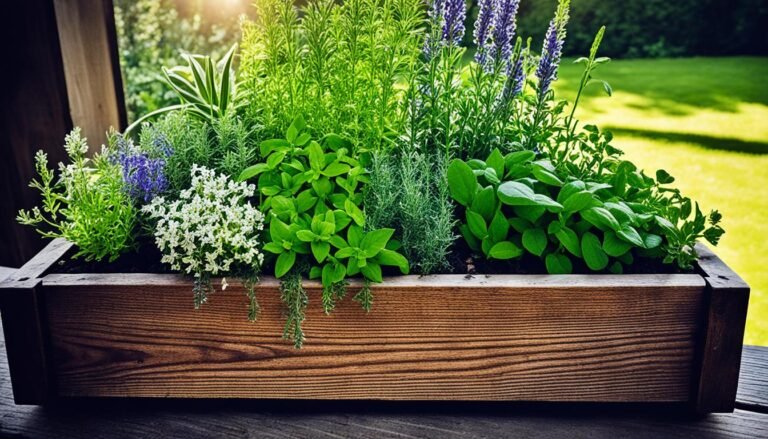Imagine the joy of picking fresh herbs from your kitchen garden – with their vibrant green leaves, tantalizing aromas, and flavor explosion they bring to your meals. This delightful experience is accessible to everyone, irrespective of their gardening expertise or space constraints.
When setting up a kitchen garden, opt for herbs with shallow root systems. These herbs feature roots that spread horizontally instead of deeply, making them perfect for small pots, raised beds, or containers on balconies and windowsills.
One excellent choice among shallow root herbs is rosemary. Known for its woody stems and fragrant leaves, rosemary is a versatile herb adding flavor to various dishes, from meats to bread. Its shallow roots make it ideal for compact spaces and its hardiness keeps maintenance minimal.
Another herb to consider is oregano. This flavorful herb common in Mediterranean cuisine can be used fresh or dried and thrives in containers due to its shallow roots. Planting oregano alongside rosemary can create a beautiful and aromatic herb garden.
Other shallow root herbs to include in your kitchen garden are marjoram, lavender, sage, and thyme. Apart from enhancing flavors, these herbs offer medicinal benefits and pleasant fragrances.
Key Points:
- Choose shallow root herbs for easy kitchen gardening, especially in restricted spaces.
- Herbs like rosemary, oregano, marjoram, lavender, sage, and thyme with shallow roots thrive in small pots or containers.
- Shallow root herbs not only enhance dish flavors but also offer health benefits and lovely scents.
- Consider planting a range of shallow root herbs for a vibrant and aromatic kitchen herb garden.
- With care, shallow root herbs can flourish, providing fresh, delicious flavors at your fingertips.
Herbs with Shallow Roots for Small Pots
For those with limited space, herbs with shallow roots are perfect for growing in small pots. Flourishing with minimal soil depth, they are easily nurtured in containers on balconies, windowsills, or in compact urban settings. Popular shallow root herbs include:
- Oregano
- Sage
- Thyme
- Chives
- Cilantro
- Lemon balm
- Marjoram
- Corsican mint
- Purslane
- Bush basil
These low-maintenance herbs can be propagated from stem cuttings or seeds. To ensure their vitality:
- Give them adequate sunlight.
- Trim them regularly.
- Water them appropriately.
By following these tips, you can cultivate a flourishing mini herb garden even in the tiniest of spaces.
Benefits of Cultivating Shallow Root Herbs in Small Pots
“Growing shallow root herbs in small pots lets you have a mini herb garden even in limited space. Low-maintenance, they can thrive in containers on your balcony or windowsill. They provide a range of flavors and aromas, enhancing your culinary creations.”
| Herb | Soil Depth Needed | Level of Care | Propagation |
|---|---|---|---|
| Oregano | 4-6 inches | Low | Stem cuttings, seeds |
| Sage | 6-8 inches | Low | Stem cuttings, division |
| Thyme | 4-6 inches | Low | Seeds, division |
| Chives | 4-6 inches | Low | Seeds, division |
| Cilantro | 4-6 inches | Moderate | Stem cuttings, division |
| Lemon Balm | 4-6 inches | Low | Stem cuttings, division |
| Marjoram | 4-6 inches | Low | Stem cuttings, seeds |
| Corsican Mint | 2-4 inches | Low | Stem cuttings, seeds |
| Purslane | 2-4 inches | Low | Seeds |
| Bush Basil | 4-6 inches | Low | Seeds |
With the right care and attention, you can enjoy a variety of fresh herbs right at your fingertips, no matter how little space you have.
Benefits of Shallow Root Herbs in Landscaping
Shallow root herbs offer numerous advantages in landscaping. Their compact growth makes them suitable for small containers and tight spaces, ideal for enhancing homes and gardens with their charming flowers and fragrances. Some, like lemon balm and corsican mint, are popular in landscaping due to their spreading nature. These herbs also repel insects, add color, texture, and are easy to maintain due to their shallow roots.

| Benefits of Shallow Root Herbs in Landscaping | |
|---|---|
| 1. Compact Growth Habit | Perfect for small containers and tight spaces |
| 2. Beautiful Flowers and Fragrances | Enhance aesthetic value of homes and gardens |
| 3. Insect-Repelling Properties | Keep unwanted pests away |
| 4. Adds Color and Texture to Plantings | Create visually appealing landscapes |
| 5. Easy to Maintain | Thrives in various soil conditions |
Tips for Growing Shallow Root Herbs
Growing shallow root herbs requires specific care. Here are tips to successfully cultivate these herbs:
- Choose the right containers: Select shallow pots or raised beds for the shallow roots of these herbs to ensure good drainage and prevent waterlogged soil.
- Use well-draining soil: Shallow root herbs prefer loose, well-draining soil to prevent hindrance in root growth and rot.
- Provide adequate sunlight: Most shallow root herbs thrive in full sunlight, so locate your garden where it gets 6 hours of direct sunlight daily.
- Water consistently: While they prefer drier conditions, maintain consistent moisture by watering when the top inch of soil is dry, avoiding overwatering.
- Prune regularly: Regular pruning encourages bushier growth by pinching off stem tips.
- Provide support when needed: Some herbs like sage and thyme may need stakes or cages for support when they become top-heavy, preventing breakage.
By following these tips, you can grow a thriving garden of shallow root herbs, delivering fresh flavors and fragrances throughout the growing season.
Oregano – Drought-tolerant and Versatile
Oregano is a well-known shallow root herb recognized for its drought tolerance and versatility in cooking. Requiring minimal care, oregano be easily grown from stem cuttings or seeds. Besides culinary use, this herb is valued for its medicinal properties.
Essential in Italian, Greek, and Mexican cuisines, oregano enhances soups, stews, and meat dishes with its unique aroma and flavor. Its antioxidant, antimicrobial properties, immune-boosting effects, and anti-inflammatory compounds make it a key herb for well-being.
Culinary Uses of Oregano:
A versatile herb, oregano finds application in various culinary dishes. Dried leaves are common in spice blends while fresh leaves garnish and elevate numerous dishes. Whether in pasta sauces, pizza toppings, or roasted veggies, oregano enriches the dining experience.
Growing Tips for Oregano:
Growing oregano is simple:
- Choose a sunny, well-drained spot.
- Plant in spring post last frost or fall.
- Water sparingly due to its drought tolerance.
- Regularly prune for bushier growth and better flavor.
- Harvest as needed, ensuring leaves are left for regrowth.
Common Varieties of Oregano:
| Variety | Description |
|---|---|
| Mediterranean Oregano | Strong-flavored, common in Mediterranean cuisine. |
| Mexican Oregano | Distinct taste for Mexican and Latin American dishes. |
| Golden Oregano | Golden foliage adds interest to gardens. |
Oregano, versatile and drought-tolerant, enriches various dishes and well-being, making it a great addition to any herb collection.
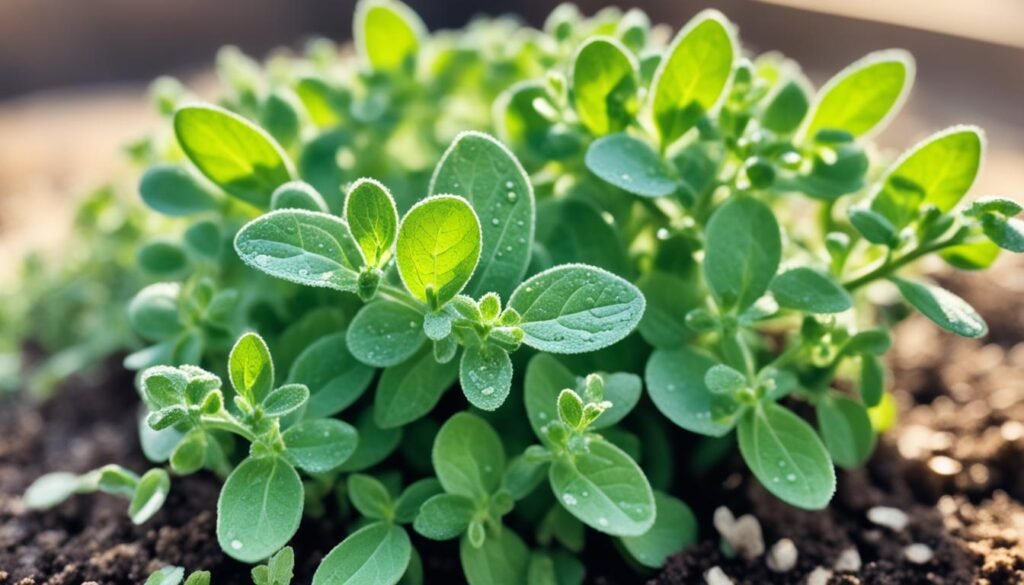
Sage – Small Size with Big Flavor
Sage, a small herb with big flavor, stands out for its culinary excellence. Its compact growth allows it to thrive in tight spaces and small containers, making it ideal for urban gardeners. Through easy propagation from stem cuttings or division, sage can be grown by beginners and experts alike. Despite its size, sage’s earthy flavor enhances salads, soups, and egg dishes.
Here are key points about sage:
- Compact, flavorful sage fits small spaces.
- Highly versatile, enhancing various dishes.
- Easily propagated from stem cuttings or division.
- Common in salads, soups, and egg dishes.
Embrace the bold flavor of sage in your kitchen, elevating your cooking to new realms!
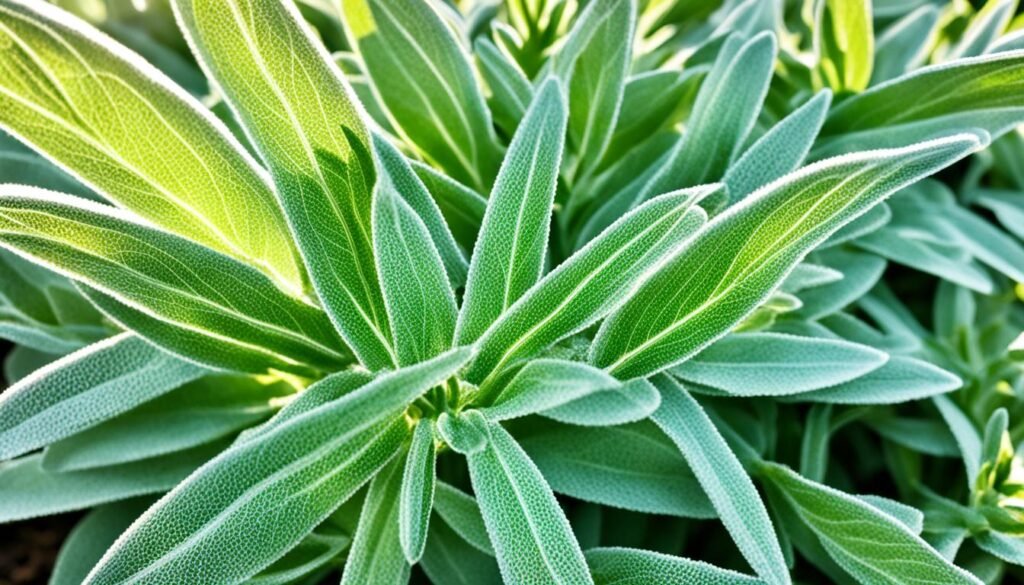
Thyme – A Delicate and Aromatic Herb
Thyme stands out as a small perennial shrub with fragrant, tiny leaves. Valued for its culinary versatility, thyme imparts an earthy flavor to a range of dishes. Its ease of propagation through division or seeds and ability to thrive in narrow, deep containers make it a go-to herb for those with limited space.
Thyme not only enriches cuisines but also adds elegance with its delicate leaves and pink or purple flowers.
Whether seasoning or enjoying its fragrance, thyme promises a culinary journey of depth and aroma.
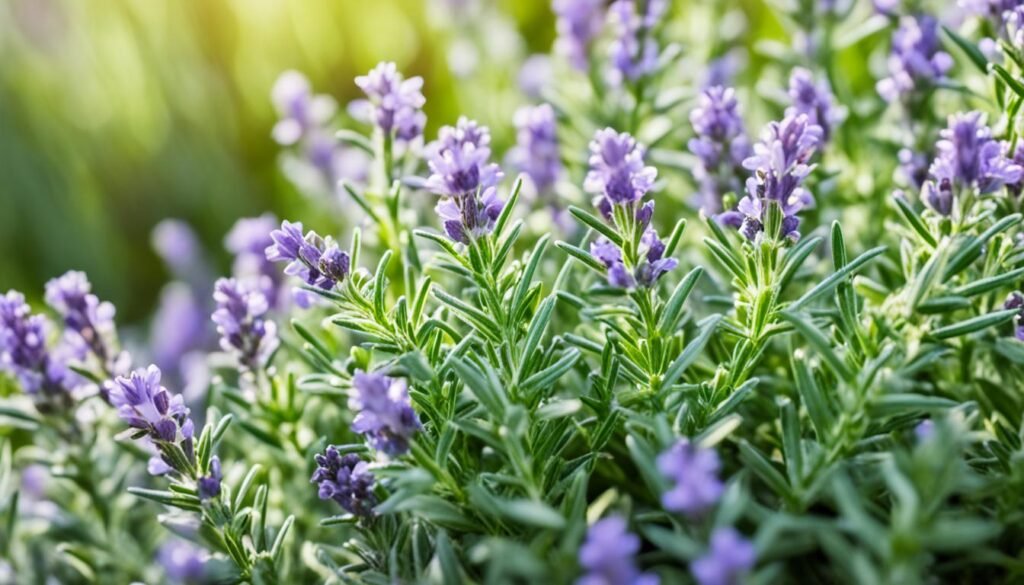
Chives – Delicate Onion Flavor and Beautiful Flowers
Chives, shallow root herbs, offer delicate onion flavor with lovely purple flowers. Versatile in Asian, Mexican, and Indian dishes, they add freshness and elegance to meals.
Best grown from seeds, chives thrive in small containers, flourishing in limited spaces. Their appealing purple flowers not only visually enhance dishes but also serve as beautiful garnishes.
Regular harvesting of chives promotes new growth, sustaining plant health.
Culinary Inspiration: Fresh and Flavorful Chive Recipes
“Chives add a subtle onion flavor that brightens up any dish. From creamy soups to savory omelets, they bring a refreshing and aromatic touch.” – Chef Emily Johnson
Enjoy mouthwatering chive-infused recipes:
- Chive and Goat Cheese Omelet: A fluffy omelet with creamy goat cheese, sprinkled with fresh chives.
- Chive Buttered Corn: Sweet corn kernels sautéed in chive-infused butter for delightful flavors.
- Chive Potato Salad: Light and refreshing, with diced potatoes, tangy Greek yogurt, and abundant chopped chives.
Chives, with their fresh onion flavor and exquisite flowers, are essential for any kitchen, uplifting and enhancing dishes.
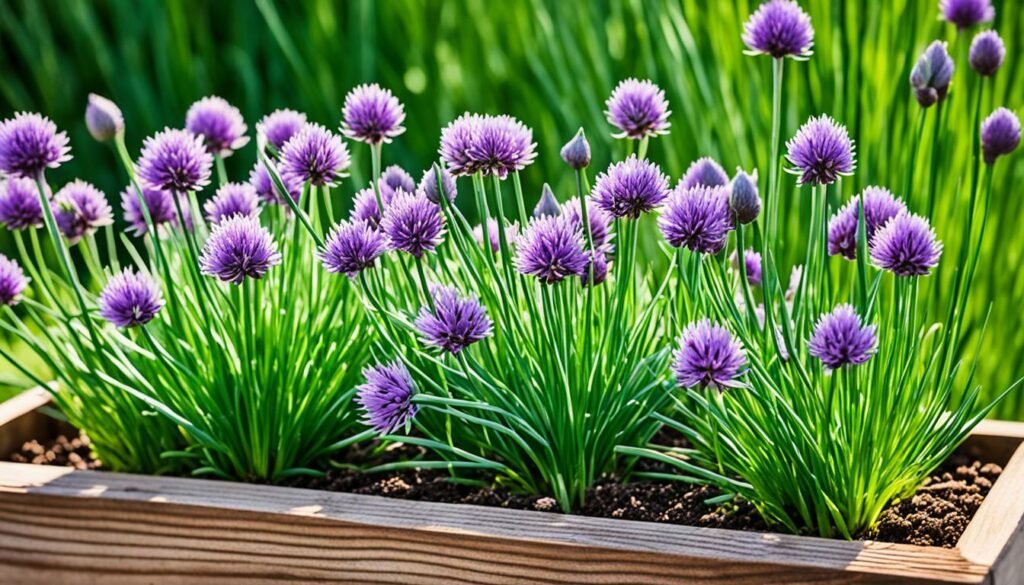
Cilantro – Fragrant Herb for Latin American and Asian Cuisines
Cilantro, or coriander, a fragrant herb, is widely used in Latin American and Asian cuisines. Its distinct flavor and aroma add a unique touch to dishes.
Cilantro prefers cooler climates, quick to seed in hot weather. Frequent harvesting to prevent flowering is advisable to ensure a steady leaf supply all season. Providing ample water and shade helps to maintain its freshness.

Selecting a compact variety and offering adequate space are vital for cilantro’s growth. Easy to grow from stem cuttings or division, cilantro can be contained, fitting indoor or outdoor spaces with limitations.
In dishes, cilantro leaves garnish soups, stews, and beyond, adding refreshment and a lemony tang to the cuisine. Sought-after in teas and desserts, these leaves are a culinary treat.
“Cilantro brings vibrancy and freshness to dishes, complementing other ingredients. Its aroma aligns with traditional Latin American and Asian cooking, anchoring many classic recipes.”
Whether whipping up salsa, guacamole, curry, or chutney, cilantro enriches flavors and elevates culinary creations, promising a tantalizing experience.
Conclusion
Low-maintenance herbs with shallow roots are optimal for space-efficient kitchen gardens, thriving in small balconies, limited patios, or utilizing window space, enriching dishes with varied flavors and aromas.
Cultivating shallow root herbs enables you to relish a diverse culinary experience. From the earthy tones of sage and thyme to the zest of chives and cilantro, these herbs infuse dishes with a delightful touch.
With proper care, considering sunlight exposure, pruning, and watering needs, these herbs thrive in tiny pots and containers, catering to beginners and seasoned gardeners. Embark on your shallow root herb garden journey today, savoring the joy of harvesting fresh, flavorful herbs at home.
FAQ
What are shallow root herbs?
Shallow root herbs have roots near the surface, spreading horizontally instead of deep into the soil.
